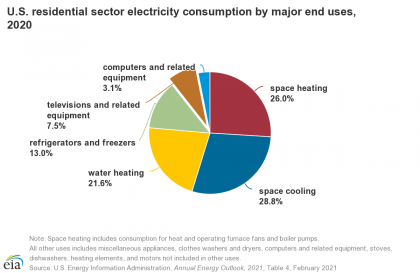People talk a lot about smart homes and smart devices. A smart home comprises devices that are connected through the internet, and usually offers a lot of convenience. They can also be monitored remotely. Some of the systems that can be managed include heating and lighting systems.
However, there is a huge difference between a smart home that offers hi-tech, aesthetic upgrades and one smart devices that delivers convenience with the added benefit of long-term financial and (even better) energy efficient investments. This article tackles the concept of the differences between smart devices versus a smart ecosystem but we want to add every day examples of changes you can make whether you’re renting, not in the market to buy or simply not ready to shell out thousands of dollars in smart upgrades.
Lights
Taking the time to evaluate the lights in your home and swap them out for energy efficient replacements can go a long way toward a smarter home. Common lightbulbs now sold in the United States typically use about 25%-80% less energy compared to the incandescent bulbs that were widely used before. The next time you’re shopping for lights, look for halogen incandescent bulbs, compact fluorescent lamps (CFLs), or light emitting diodes (LEDs) with the Energy Star certification. These bulbs meet newer energy-friendly standards and while they are slightly higher in price, they last significantly longer than traditional bulbs and won’t need to be replaced as often.
While changing out lights may seem like a little change, it can save lots of money. Especially for businesses looking to reduce costs. For Target, Starbucks and Hermes, they saved millions just by switching to LEDs. Sometimes the little things go a long way.
Appliances
If you’re currently in the market for a new appliance, a great place to start your search is with appliance with the Energy Star certification. Holistically, Energy Star is a program between the Environmental Protection Agency and the Department of Energy with requirements and specifications that helps consumers save money while protecting the environment with energy efficient products and practices.
Not ready to swap out all or any of your appliances yet? Not to worry. There are a number of energy saving tips that help your home work smarter and not harder throughout the year.
Heating and Cooling
If you already have a smart thermostat in your house, you probably know the benefits that come with automated regulation and how it can save energy and money. Wi-Fi enabled smart thermostats learn your temperature preferences and establish a schedule that automatically adjusts to energy-saving temperatures when you are asleep or away from home. An extra bonus is that geofencing can enable your smart thermostat to know when you’re on the way home and automatically adjust your home’s temperature to your preference.
Smart thermostats can be a harder option to implement if you’re renting a home or living in an apartment. However, if your apartment doesn’t have a smart thermostat or your landlord isn’t willing to install one in your house, there’s the traditional (and manual) option of adjusting the heat or air before you leave your house for long periods of time. This alternative still makes great strides in reducing your energy bills and usage.
Electronics
A common routine for many of us before we go to bed is to charge our smartphones, tablets, reading devices, etc. Did you know though that most devices only need a couple hours to fully recharge? The end result is that small amounts of energy are unnecessarily drawn during the hours you’re still sleeping.

This may not seem like a big deal but when put into perspective the current number of smartphone users in the world today is 3.8 billion. Over time that adds up to a significant amount of energy emissions. A small and inexpensive way to help curb your own usage is with timer controls that can automatically shut off lights, appliances and other devices off when they’re not in use. Cost-friendly options can be found for under $20.
There’s a lot that goes into creating a smarter home. By rethinking and updating the way we think about what a ‘smart’ home is, there are small steps that get us to the greater goal of being more energy conscious and efficient.